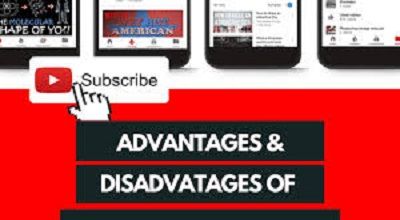Advantages and Disadvantages of YouTube For Teachers
YouTube can be a valuable tool for teachers, providing various advantages, but it also comes with certain disadvantages. Here are some of the key points to consider:
Advantages:
Access to a Global Audience:
- Advantage: Teachers can reach a wide and diverse audience, allowing them to share educational content with students globally.
Visual and Engaging Content:
- Advantage: YouTube allows teachers to create visually appealing and engaging content, making it easier for students to grasp complex concepts.
Variety of Content:
- Advantage: A vast array of educational videos and channels are available on YouTube, covering a wide range of subjects. Teachers can leverage this content to supplement their lessons.
Flexibility and Convenience:
- Advantage: Teachers can create and share videos that students can access at their own pace, providing flexibility in learning.
Interactive Learning:
- Advantage: YouTube offers features like comments and discussion forums, enabling interactive learning experiences. Teachers and students can engage in discussions, share thoughts, and ask questions.
Resource for a Flipped Classroom:
- Advantage: YouTube is a useful platform for implementing a flipped classroom approach, where students watch instructional videos at home and use class time for discussion and application.
Accessibility and Inclusivity:
- Advantage: Video content on YouTube can cater to different learning styles, making education more accessible for visual and auditory learners.
Free or Low-Cost Resource:
- Advantage: YouTube is generally free to use, providing an affordable option for teachers to access and share educational content.
Disadvantages:
Distractions and Inappropriate Content:
- Disadvantage: YouTube contains a vast amount of non-educational content, and students might get distracted or encounter inappropriate material.
Limited Control Over Ads:
- Disadvantage: Teachers have limited control over the advertisements that appear on YouTube, and some ads may not be suitable for an educational setting.
Copyright Concerns:
- Disadvantage: Teachers need to be cautious about copyright issues when using YouTube content in their lessons. Unauthorized use of copyrighted material can lead to legal complications.
Reliability and Technical Issues:
- Disadvantage: Technical glitches, internet connectivity problems, or YouTube outages can disrupt the learning experience.
Privacy Concerns:
- Disadvantage: Sharing content on a public platform raises privacy concerns. Teachers must be mindful of the information they share and consider the privacy of their students.
Dependency on Technology:
- Disadvantage: Relying heavily on YouTube may create challenges for students who do not have regular access to the internet or devices.
Quality Control:
- Disadvantage: The quality of educational content on YouTube can vary, and not all videos meet academic standards. Teachers must carefully curate content for accuracy and relevance.
Limited Interactivity in Videos:
- Disadvantage: While YouTube allows for some interaction, it may not provide the same level of engagement and interactivity as a live classroom setting.
Summary
In conclusion, while YouTube offers numerous advantages for teachers in terms of accessibility, engagement, and flexibility, it is essential to be aware of the potential drawbacks and take steps to mitigate them for a positive and effective learning experience.
